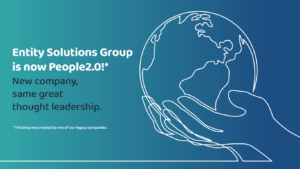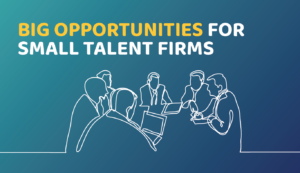Being an employee in the present day is quite different from what it was just a few decades ago. Workplaces are becoming more diverse, and a strict 9 to 5 schedule no longer applies to an increasingly wired workforce. Human capital is moving across borders and workers are picking up new skills in a time of intense change. Here are the top five global workforce trends all businesses need to be cognisant of.
Global demographic shifts
As some economies have matured and others grown and developed, we are seeing dramatic demographic shifts on a global scale. In developed societies, ageing populations have caused skills shortages to many industries specifically; health, education and engineering sectors.
According to the 2015 Intergenerational Report, the number of people aged 15 to 64 for every 1 person aged 65 and over, has fallen from 7.3 people in 1975 to an estimated 4.5 people today. By 2054, this is projected to nearly halve again to 2.7 people for every 1 person over 65 years of age. Given these statistics, there is a substantial gap between baby boomers retiring and the number of generation X available to fill their shoes, putting immense pressure on employers’ ability to find the right talent.
On the other hand, developing countries, most notably China and India, are supplying huge numbers of workers skilled in areas where developed countries are facing shortages. According to the Wall Street Journal, businesses in the US are clamouring to obtain visas for skilled workers from overseas. It was reported that the April 2015 round of applications for H-1B visas exceeded the annual limit within the first week.
Workplaces are becoming more multicultural and more diverse, and Generation Y workers are redefining the way things are done. Despite the influx of younger workers, many baby boomers still continue to work beyond retirement age. This has produced a vibrant multigenerational workforce. It is not uncommon to have at least three generations working together in the modern workplace bringing with it some challenges but also many advantages.
Mobility programmes
Workers are much more mobile than before, and relocating to another city or even another country is now a common career move. Businesses are realising the need to groom talented employees with international experience, and mobility programmes that enable workers to gain global exposure are becoming increasingly popular.
Mobility in the financial services sector is extremely common. For instance, Credit Suisse are great proponents of internal mobility, and employees are encouraged to apply for positions in other regional offices. In 2014, 4,600 of their employees made an internal move, while 42% of their global vacancies were filled through internal transfers.
PwC’s Survey of Global Mobility Policies found that 46% of the participating employers offered permanent transfer policies in 2012, up from 29% in 2002. Clearly, employees have more opportunities than ever to broaden their horizons.
Equality in the workforce
While women, ethnic minorities and disabled people still earn less and face discrimination in the workplace in modern society, we are slowly creeping towards greater equality in the workforce.
Many developed societies have enacted laws against discrimination on the basis of gender, ethnicity or disability, and awareness of the need for equality in the workplace is rising every day. The enactment of a slew of legislation targeting discrimination over the past 30 years seems to have helped to boost equality in the workforce and shaped Australians attitudes towards discrimination in general.
While the gender pay gap in Australia stands at 17.1% according to the Australian government, a recent survey showed that employers were cognisant of the need to pay their staff fairly, and many planned to undertake their own gender gap analyses to ensure they were not guilty of discrimination.
According to statistics released by the Australian government, the unemployment rate for 15 to 65 year olds in Australia with disabilities decreased from 17.8% to 9.4% from 1993 to 2012. This suggests that significant strides have been made in equal opportunity employment as far as it concerns those with disabilities.
Casualisation in the workforce
Working the traditional 40 hour week is no longer standard protocol in many professional businesses. Organisations are engaging with workers in many ways, such as, permanent part-time, fixed-term contracts, casual employees, via recruitment agencies and as independent contractors. For the worker, these options are fast becoming acceptable ways of earning a living.
While the advantages and disadvantages of such work arrangements can vary greatly depending on the circumstances, research published in the Guardian shows that a significant proportion of people working under casual arrangements in Australia do so out of choice. Further to that, Entity Solutions’ IPro Index indicates that over 80% of contractors surveyed are very satisfied with working as a contractor.
The wider range of working arrangements on offer can be a boon to a workforce with differing lifestyle needs.
Attraction and retention
Thanks to increasing worker mobility and the rise of the global marketplace, there are more opportunities than ever for young, ambitious workers. Businesses are seeing a marked change in employee ideals and are scrambling to put in place retention strategies that can encourage workers to stay for the long haul.
Employers are discovering that Generation Y employees don’t just want a stable job -they’re looking for opportunities for growth, flexibility and a cause they care about. The savviest employers are able to adjust their retention strategies to help young workers find meaning and satisfaction in their work.
For instance, Richard Branson has increased the amount of paid paternity leave at Virgin to a full year. Google provides employees with free on-site medical care, travel insurance on their personal vacations and even free legal advice. It’s no wonder that Virgin and Google are two of the most sought after employers today.

Infographic: Independent Contractor or Employee?
Discover basic differences between contractors and employees with People2.0’s infographic overview.


